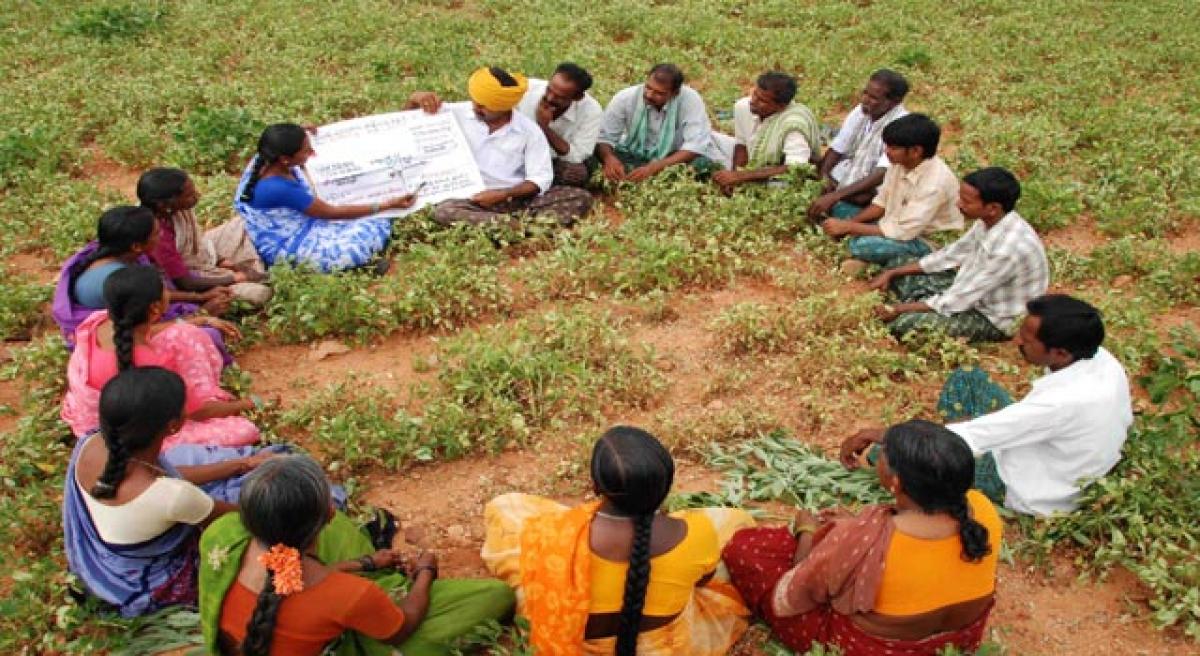Leveraging crops for human, soil nutrition

As per the assessments of experts, abnormal area expansion of cropping pattern that deters human and soil nutrition is one of the major factors that has led to crisis in crop production.
As per the assessments of experts, abnormal area expansion of cropping pattern that deters human and soil nutrition is one of the major factors that has led to crisis in crop production. In this context, Andhra Pradesh and Telangana are in the forefront, evidenced by replacement of many of crops that enrich soil and human nutrition with crops that deplete the soil fertility and influence human diet habits towards weakening of immune systems.
Crops like rice, maize, cotton, chillies, sugarcane etc., that require more artificial inputs and demand extra care have gained momentum occupying more than three fourths of cropped area in these states. Of course, market forces and policies of governments are the major precursors for this state of affairs. However, the growers who are tuned to extract much from the soil and accustomed to high input-based cropping systems seldom care to look into the quality of the food they produce. Naturally, the consumers of the end products are also the victims of this trend.
Against this background, Food and Agricultural Organization of UNO has initiated a drive for restoring nutritive-based crop adoption, under family farming systems. Widening the crop cafeteria towards nutrition both for soils and humans as well as associated animals was the first step towards that direction. Similarly, modifications in agronomy of crop production in terms of high density cropping dovetailed with mixed/inter/border crops with desired characters by less costly inputs as in Latin American and African countries was found advantageous.
Extension system should be moulded to popularise crop varieties that enrich soil structure and texture , instead of crop hybrids that disturb soil structure and nutritive status. Many of the hybrids that are developed for mono-cropping are costly, being proprietary products of companies. It is to noted here that many new crop cultures that withstand climate change and conserve natural resources and become rich source of nutrients have been identified as a better proposition by Central Institutes and state-level organisations that work for crop improvement.
The location-specific research work that paved way for creation of additional advantage through intercrops in cotton, sugarcane, maize and chillies also gained momentum as part of integrated resource management strategies. Inter-crops like cluster-beans, grain cowpea, groundnut, redgram, greengram , black gram, horsegram like legumes were found suitable in long duration crops like cotton, sugarcane and chillies. Similarly, alternate cereal crops, foxtail millet, finger millet, pearl millet were found advantageous in saving inputs due to crop duration as well as in with standing biotic and abiotic stresses comparatively, besides enhancing scope of nutritious (mineral-rich) foods.
However, these alternatives are yet to gain popularity in AP and Telangana states. There is a dire need to popularise such low in-put oriented agronomic fortifications to create cushion to farmers who confine to family farming as well as consumers who are conscious of safe and nutritious foods. In the light of FAO approaches to popularise crop production that safeguards nutrition of both soil and humans, some attempts were made during 2014-16 seasons by Rythu Rakshana Vedika, Guntur, a self-funded voluntary organisation, that shaped crop growers, mutually aided cooperative societies, to benefit both producers and consumers of food. Since cotton being major long duration crop of the district, attempts were made to develop better agronomic fortifications in that crop.
Short duration crops like soybean, cowpea, black gram, green gram, groundnut, foxtail millet, cluster bean as well as long duration crops like red gram were found advantageous in increasing nutrients value of soil and humans. During the 2016-17 season, a few farmers as members of the mutually aided cooperative society of cotton crop growers, in Pedanandipadu, Pathipadu, Chilakaluripet, Vatticherukuru mandals demonstrated that around 20 per cent of monitory benefit could be quantified in addition to non-monetary benefit of soil microflora conservation through these intercrops of cotton. It is time to leverage the agronomy of crops to derive real benefit in terms of soil fertility and nutritious rich food availability, besides safe-guarding environment in true sense. (Writer is Convenor, RythuRakshana Vedika, Guntur)
By Prof N Venugopal Rao

















